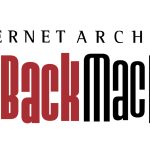Technology has improved nearly every field and manufacturing is no different. There are plenty of new options in the field of manufacturing, including 3D printing; however, many companies like to stick with what they know best. Some of the traditional methods that companies may still be using include:
- Injection Molding: This is a process where molten material is injected into a mold to make a certain part
- Vacuum Forming: This is where a sheet of plastic is heated to a forming temperature, expanded to fit a specific mold, and then forced against the mold by a vacuum
Some of the other traditional methods that manufacturing companies such as Dyson Corp might be using include milling, die casting, sand casting, and even extrusion; however, these traditional methods are actually more expensive than some of the newer methods available. Some of the reasons why traditional manufacturing is so expensive include:
- The process of acquiring the right tools and machines for manufacturing certain components can be expensive
- It is difficult to produce anything on short notice with traditional manufacturing methods
- Traditional methods are only worth the investment if there is a large volume project involved
The good news is that there is a new manufacturing method that companies can use to drive down their costs. This is where 3D printing, an additive manufacturing technology, has revolutionized the manufacturing space.
The Advent of 3D Printing can Drive Down Costs
3D printing has improved significantly during the past few years. Now, it is possible for companies to create new parts in a quick, cost-effective manner. 3D printing takes a complete object and analyzes it, slice by slice. Then, the printer recreates the object, piece by piece, until every slice comes together to form the final object. 3D printers have already been used to make complex parts such as hinges, wheels, and many parts play a role in the manufacturing process.
For these reasons, 3D printing presents an efficient, cost-effective alternative to the traditional manufacturing process that organizations can use to slash their overhead costs. 3D printing and design can transform the traditional manufacturing process for a variety of parts and components used in manufacturing anything from consumer goods to medical devices.
The Advantages of 3D Printing
There are numerous advantages that come with investing in 3D printing. These include:
- There are no costs associated with tooling or finding new machines
- The turnaround time is quick, allowing companies to get orders returned in a single day with advanced options such as ColorJet and the HP Multi Jet Fusion 3D printing
- It is easy to make quick changes or updates to designs without impacting the cost at all
- 3D printing is capable of handling complex geometric shapes
- It is possible to take multiple parts and combine them into a single piece using 3D printing
- Companies can use 3D printing to reduce their inventory and overhead costs because 3D printers can complete jobs on short notice
- With the predictability of 3D printing, material waste will be reduced because companies only have to purchase exactly what they need for the job
All of these advantages can help companies reduce their overhead costs by investing in the efficiency of 3D printing. 3D printing has the potential to change manufacturing, making it more efficient and cost effective for OEMs and other tier manufacturers.










